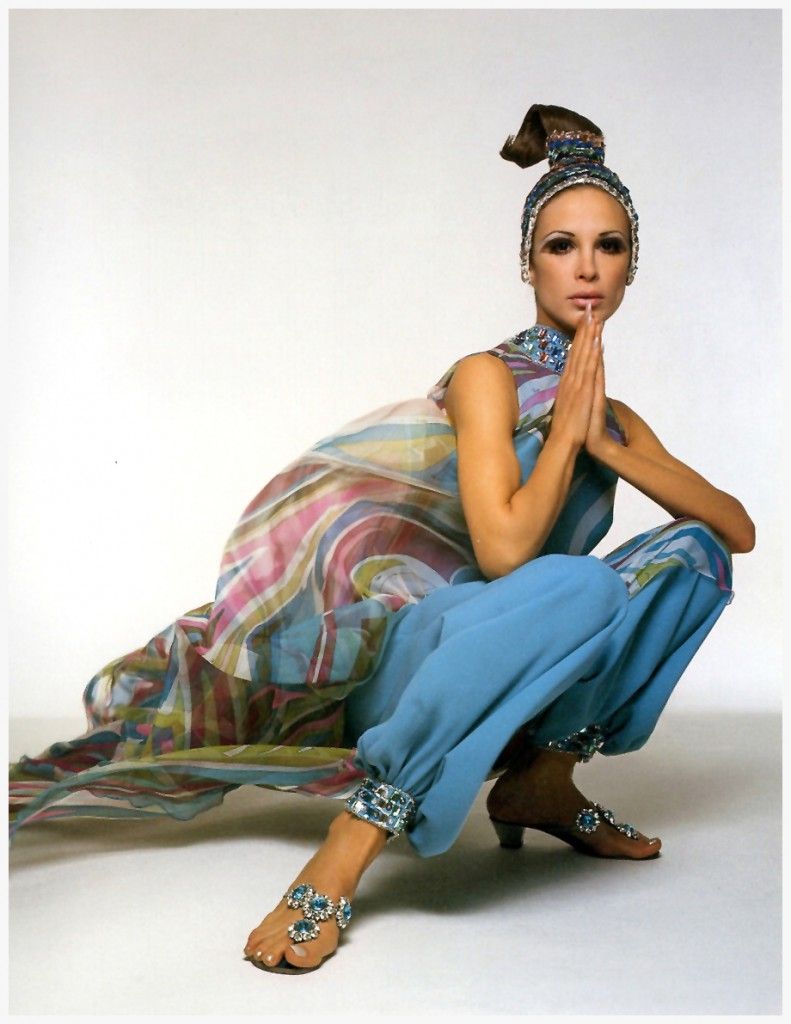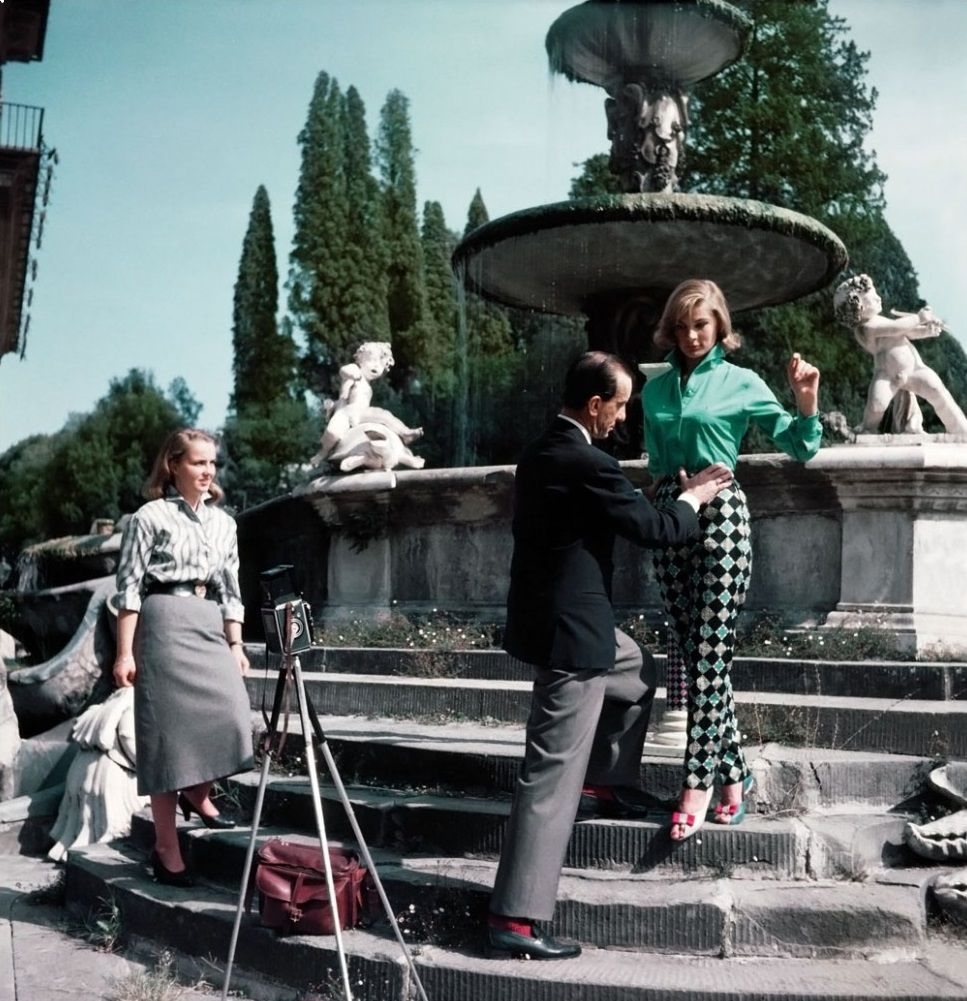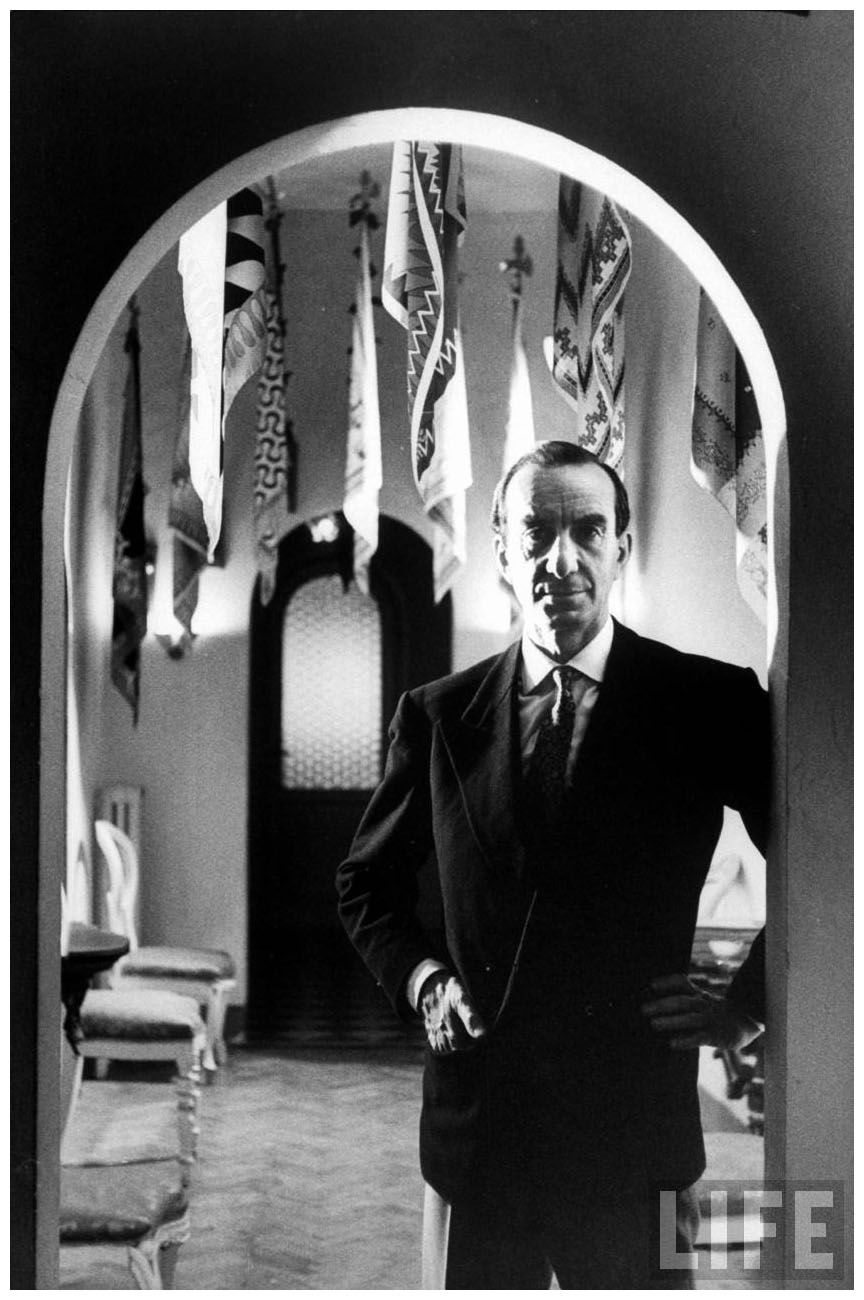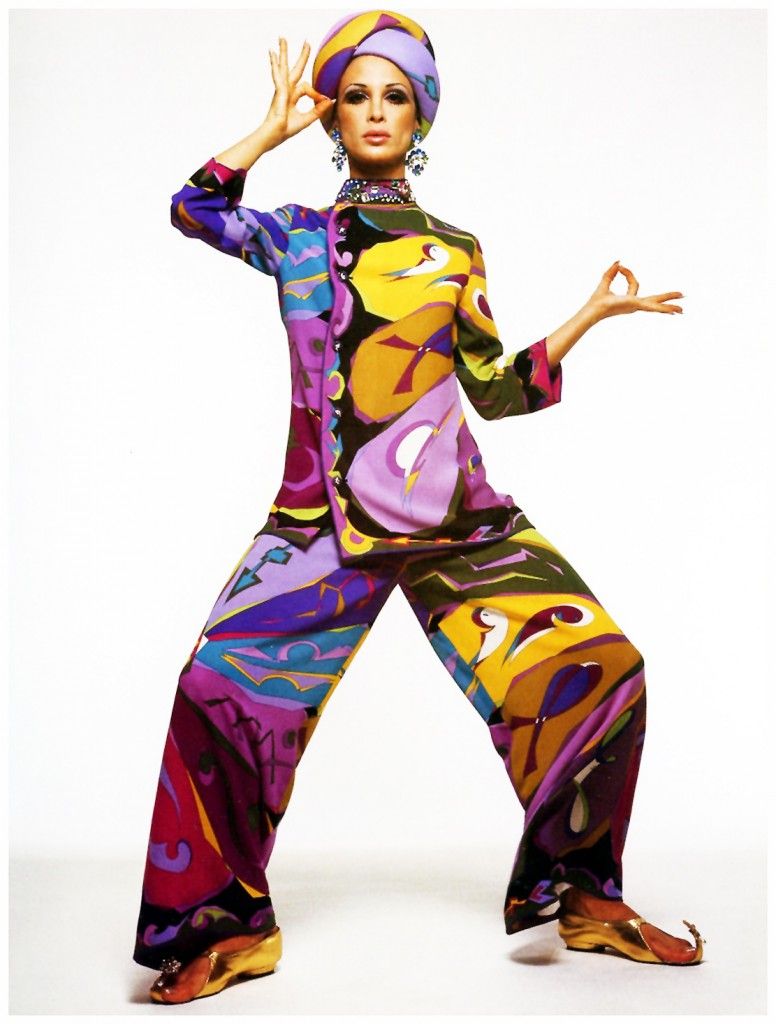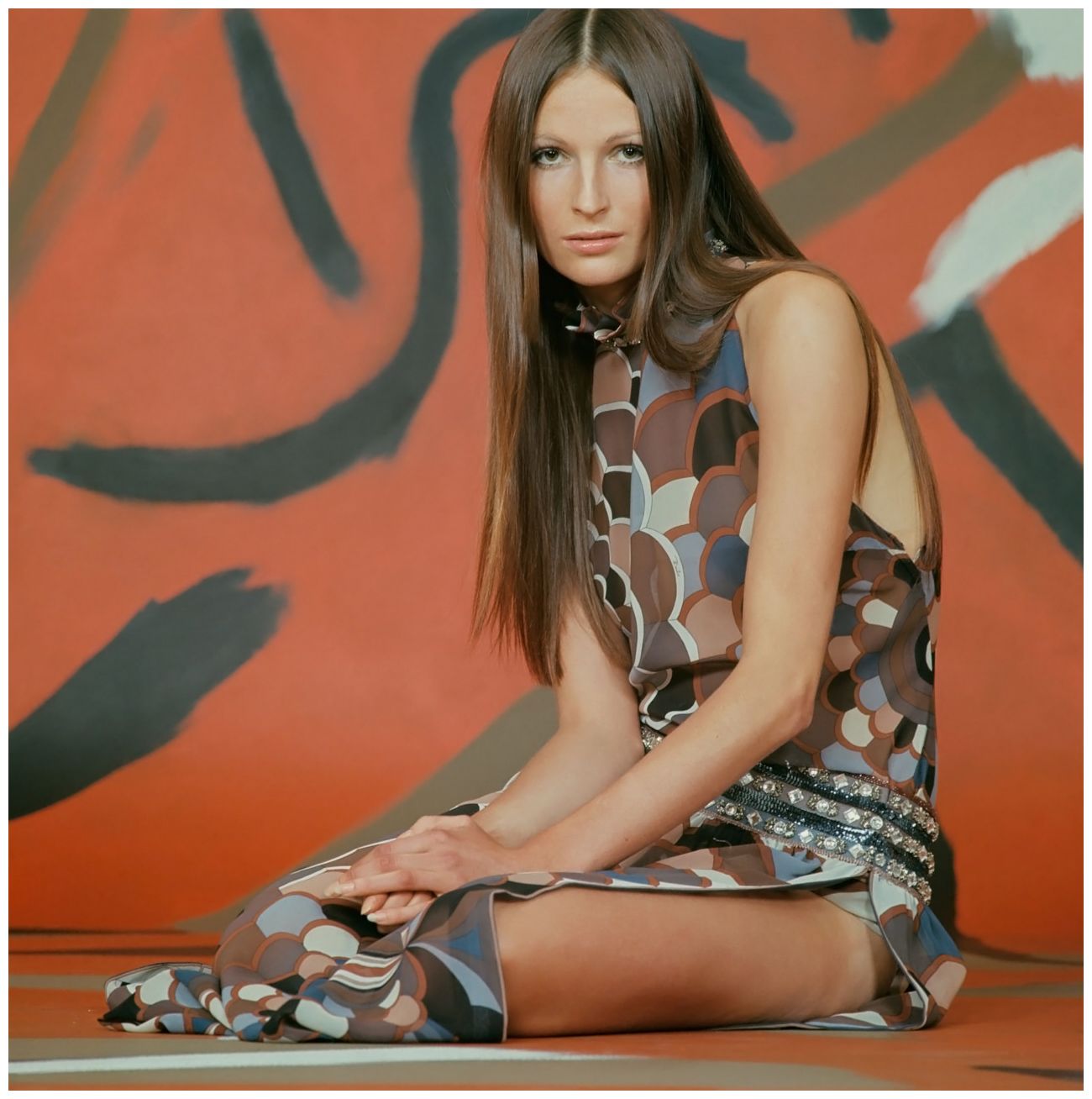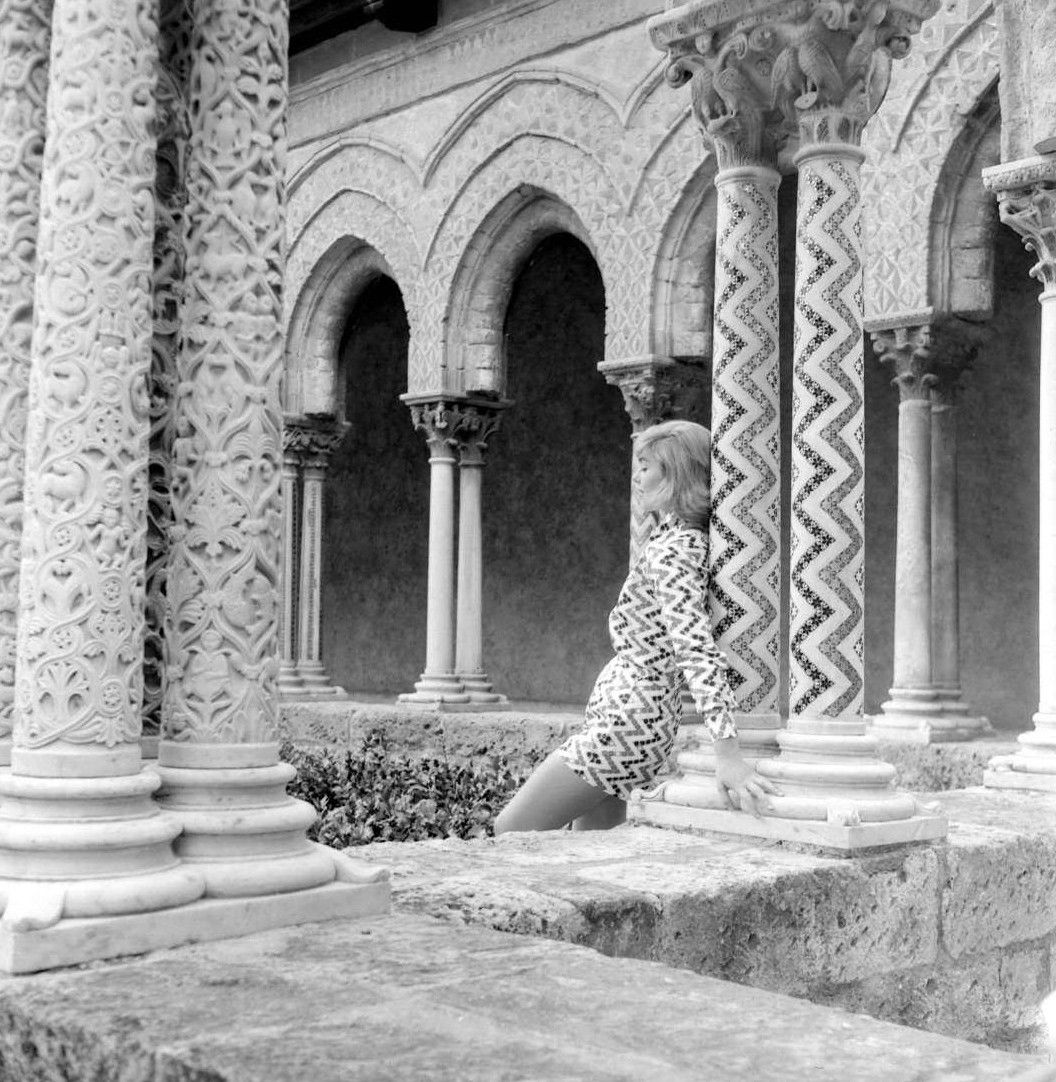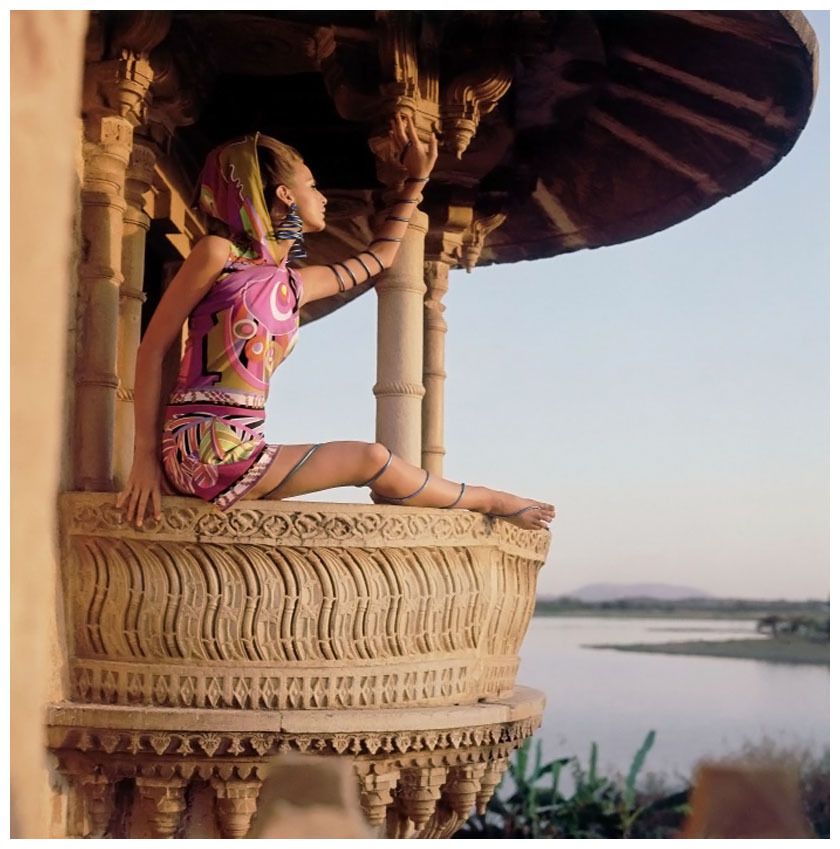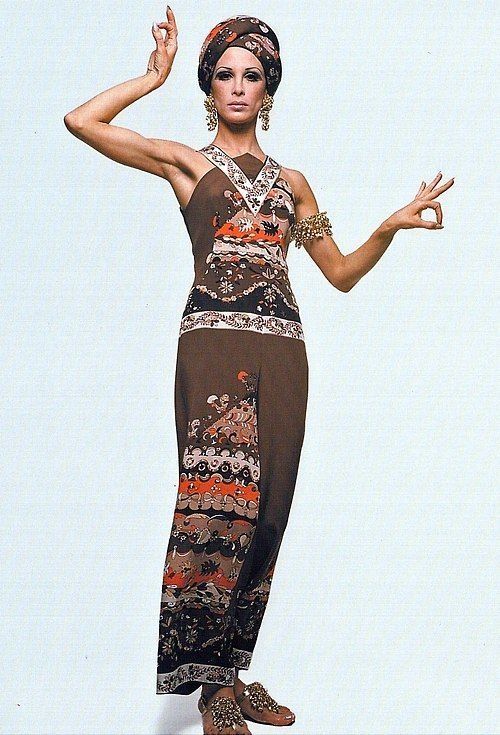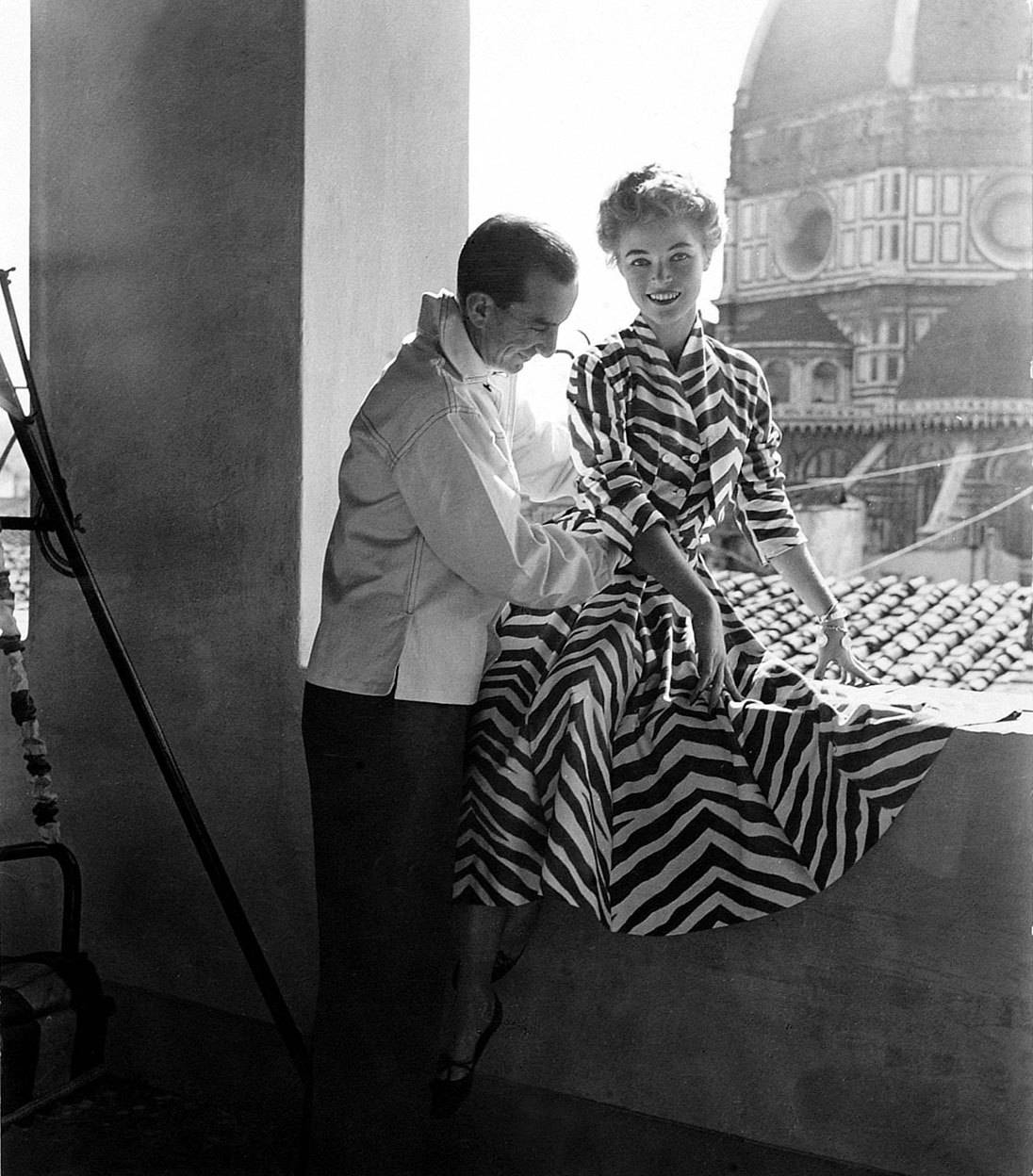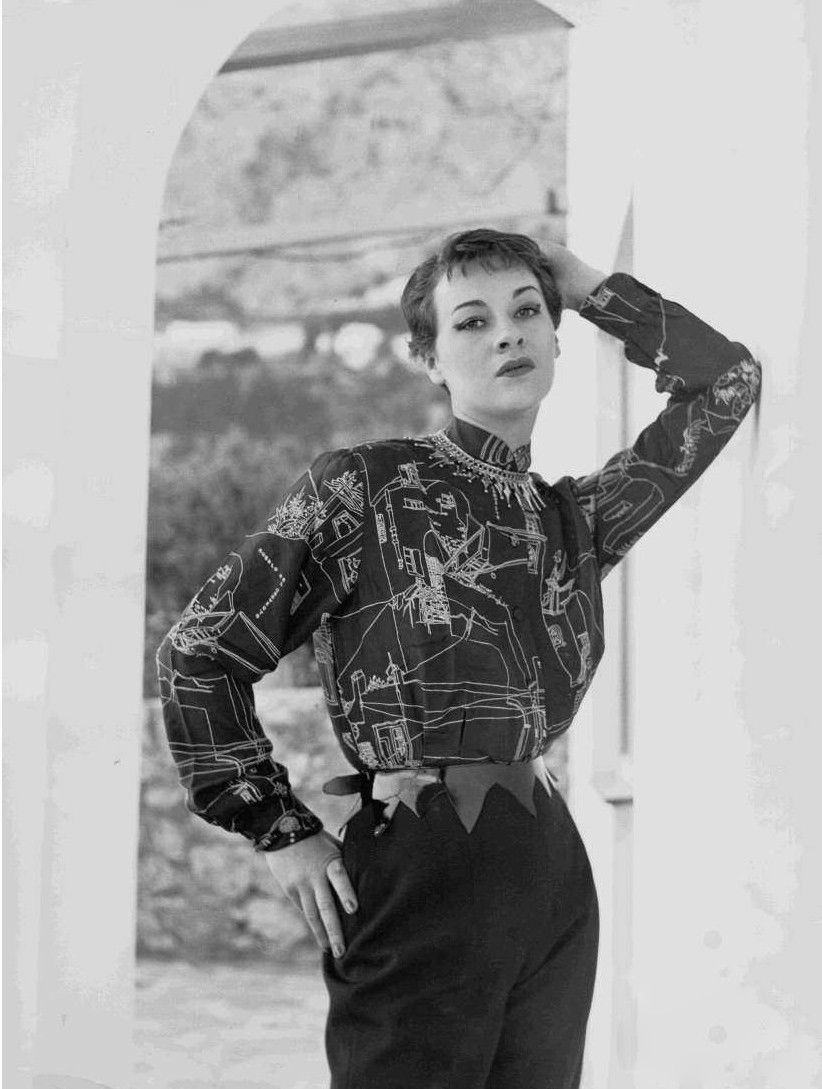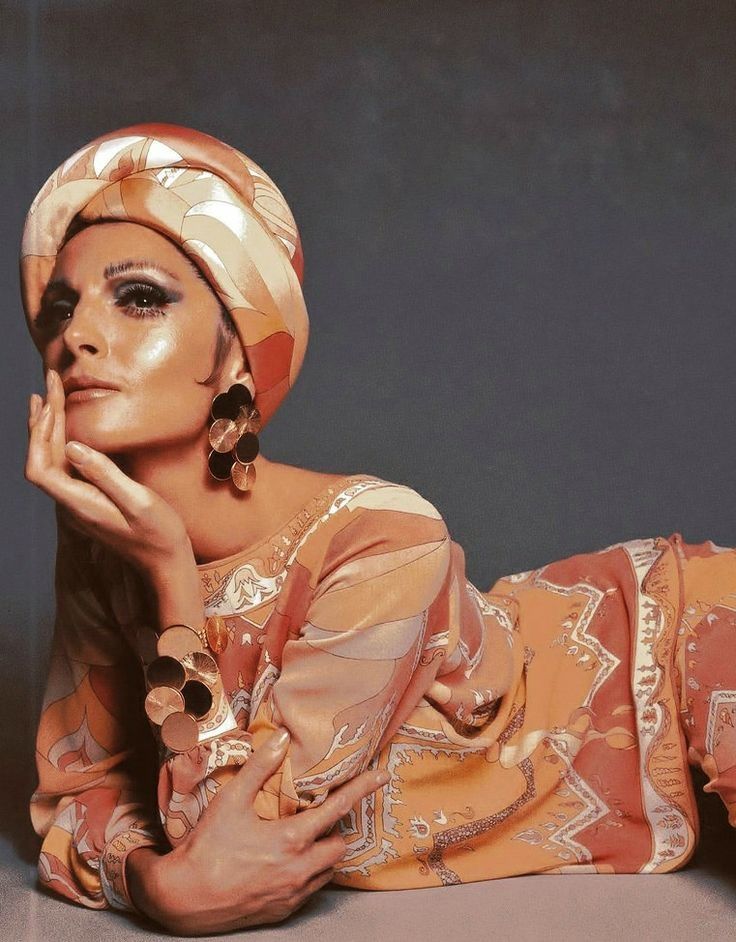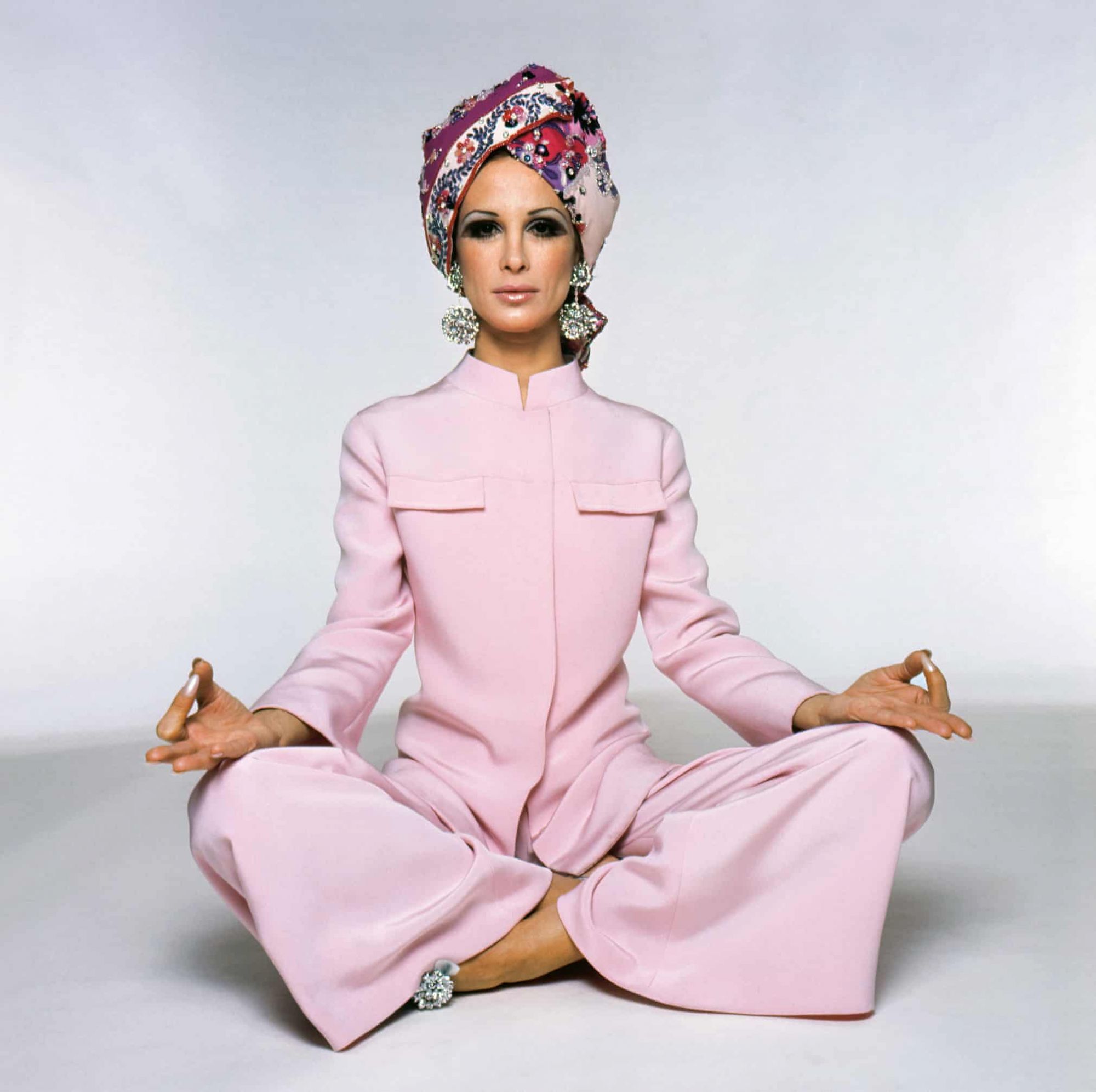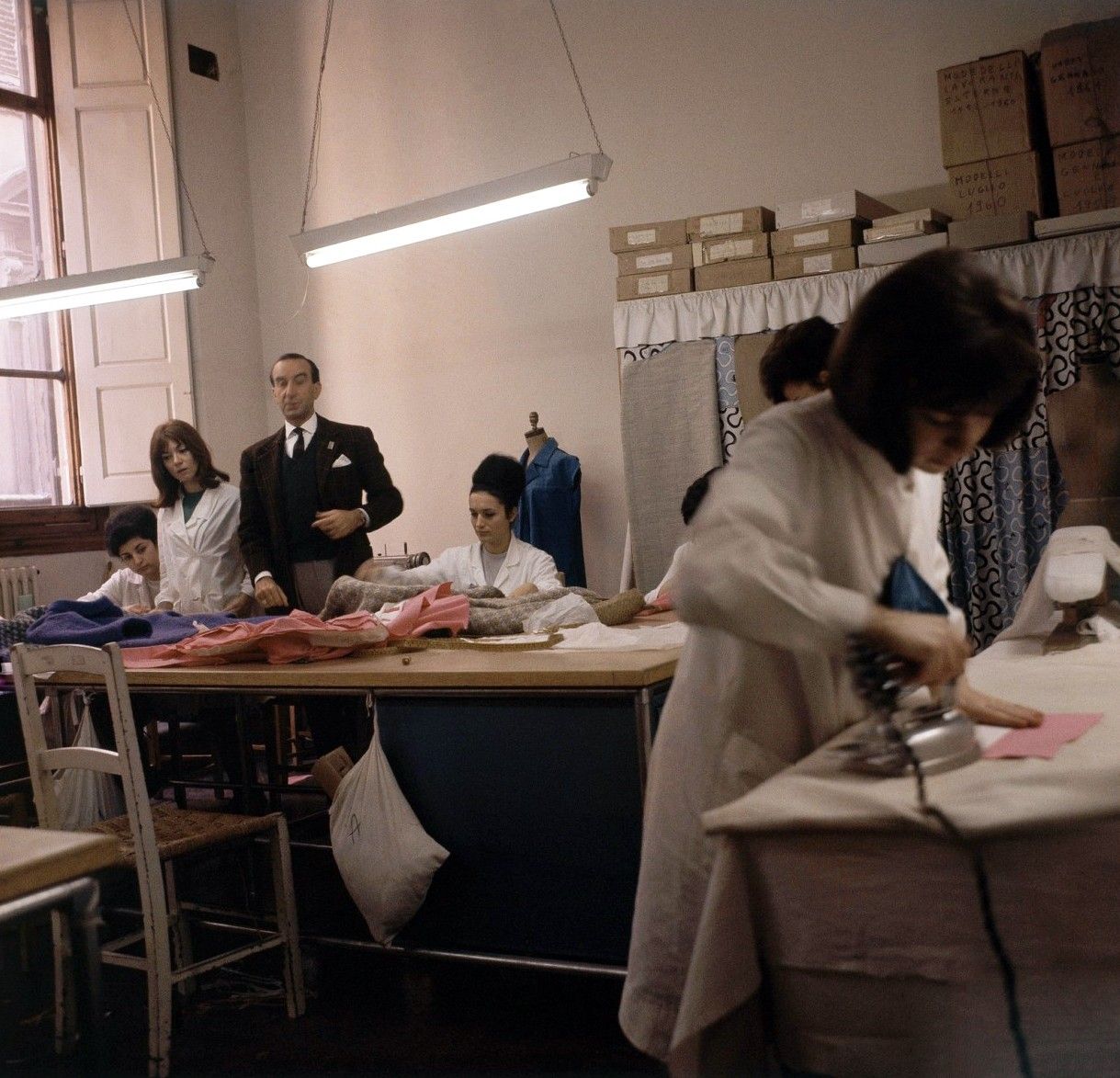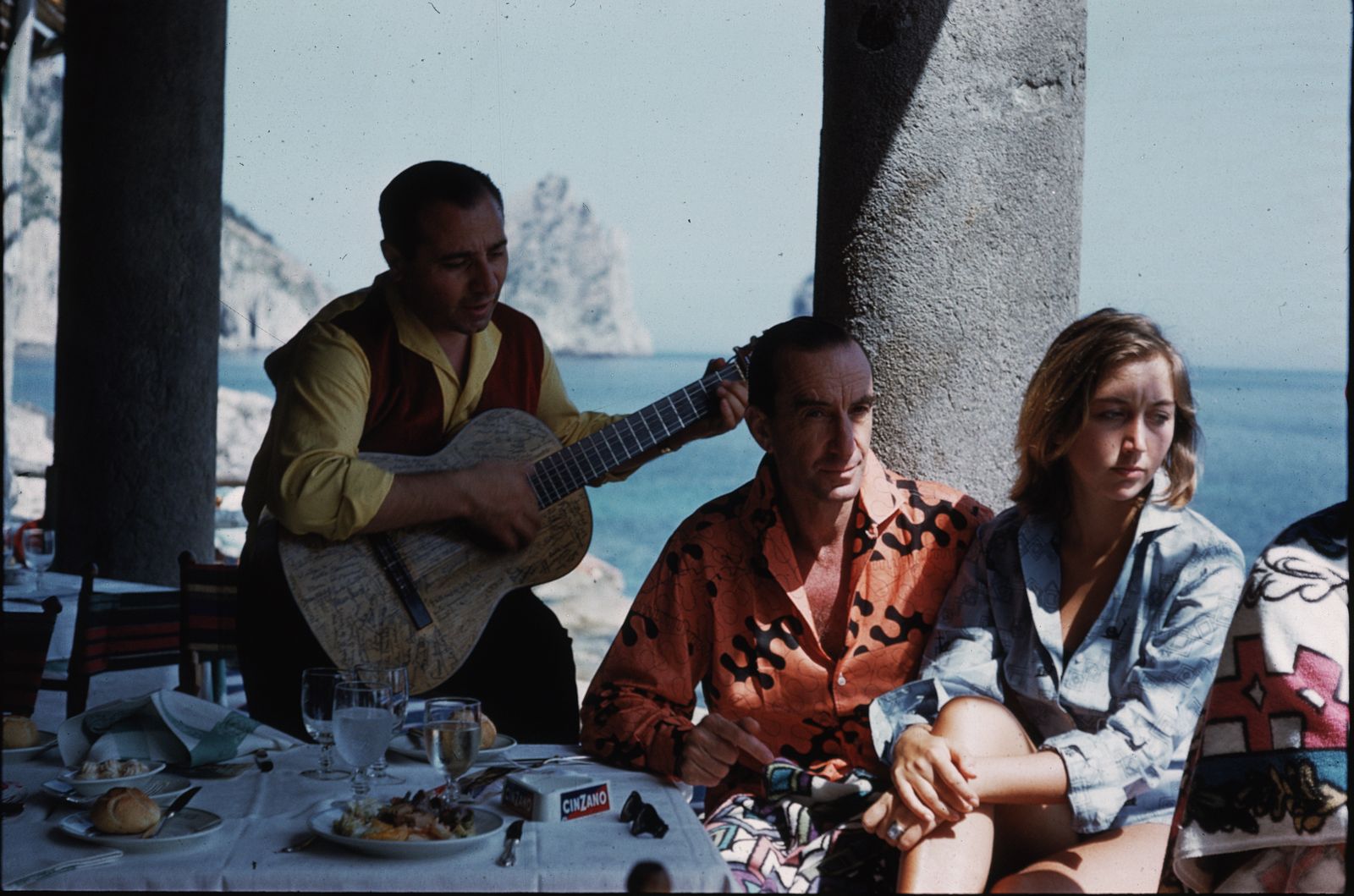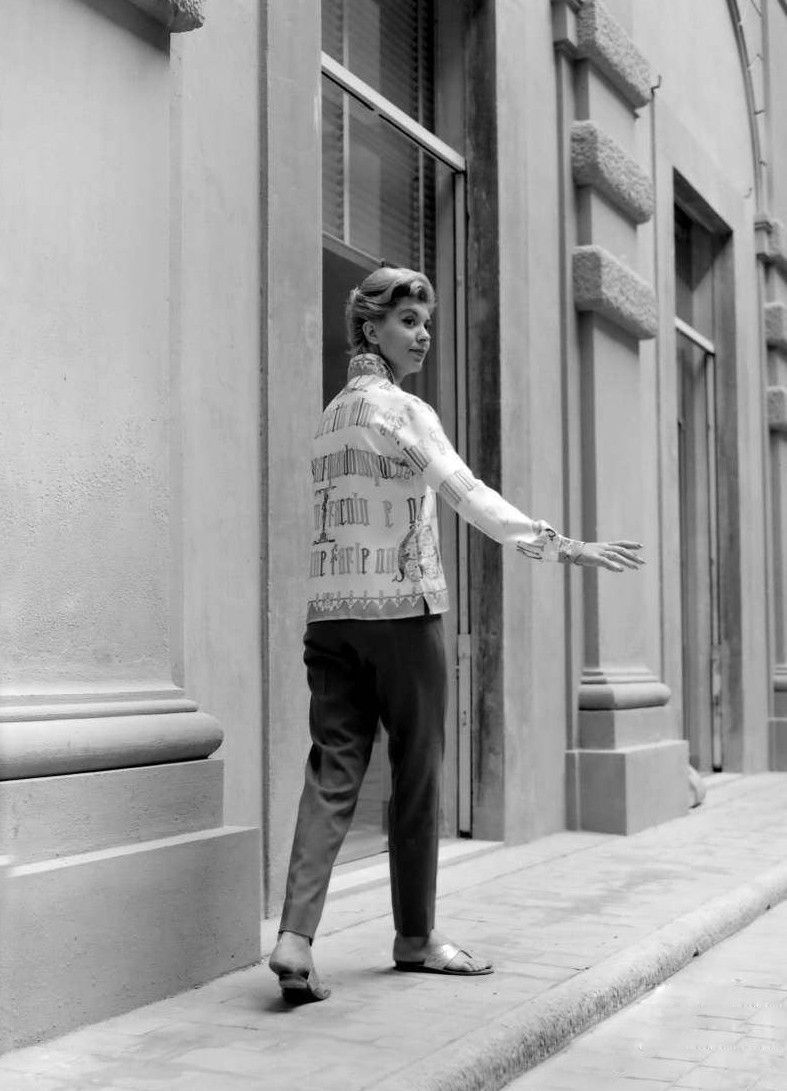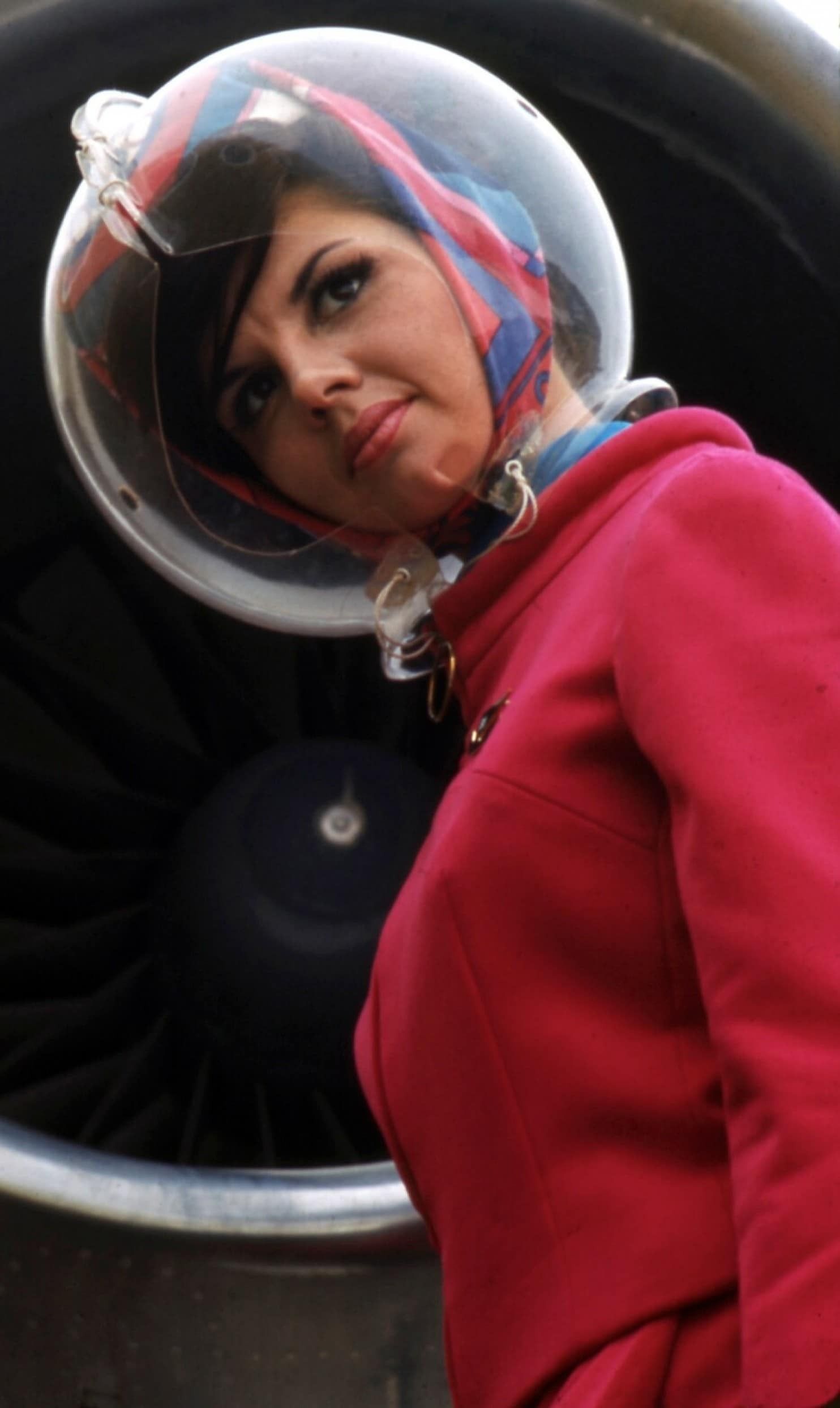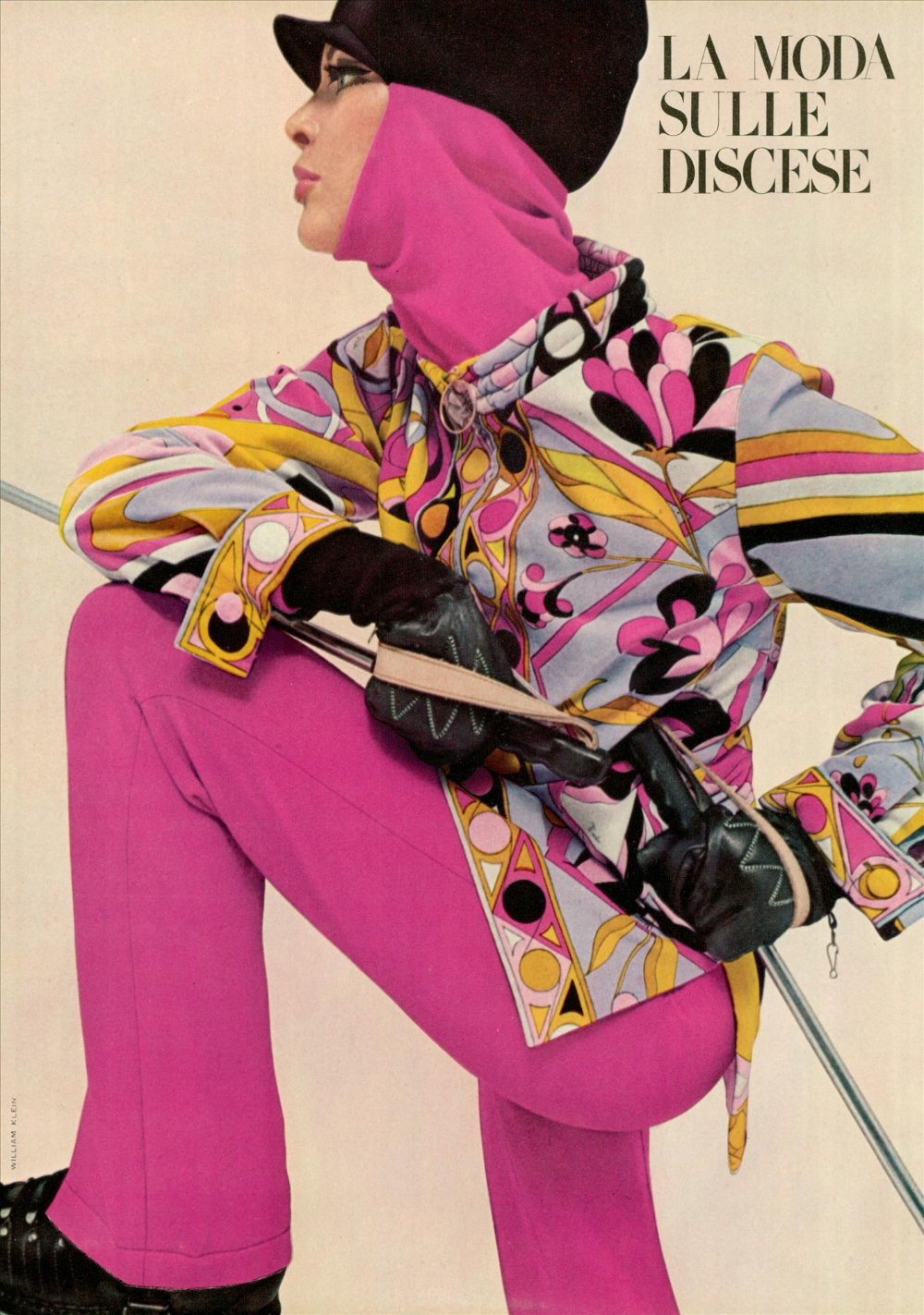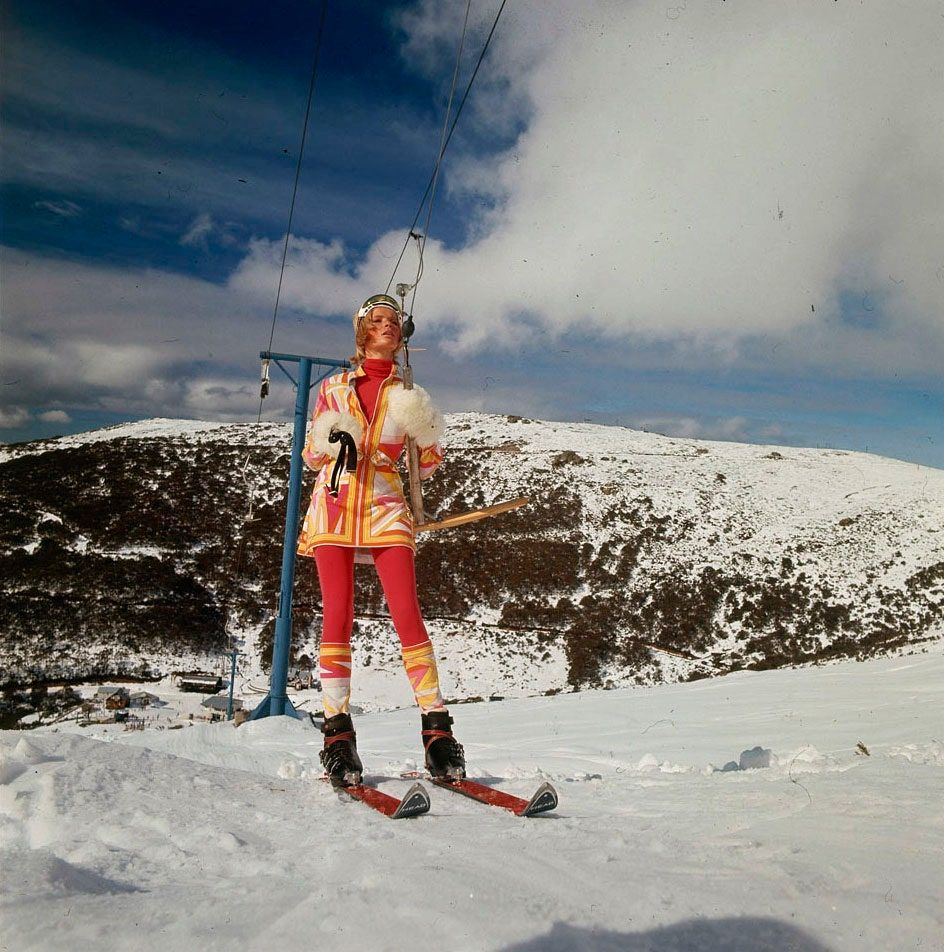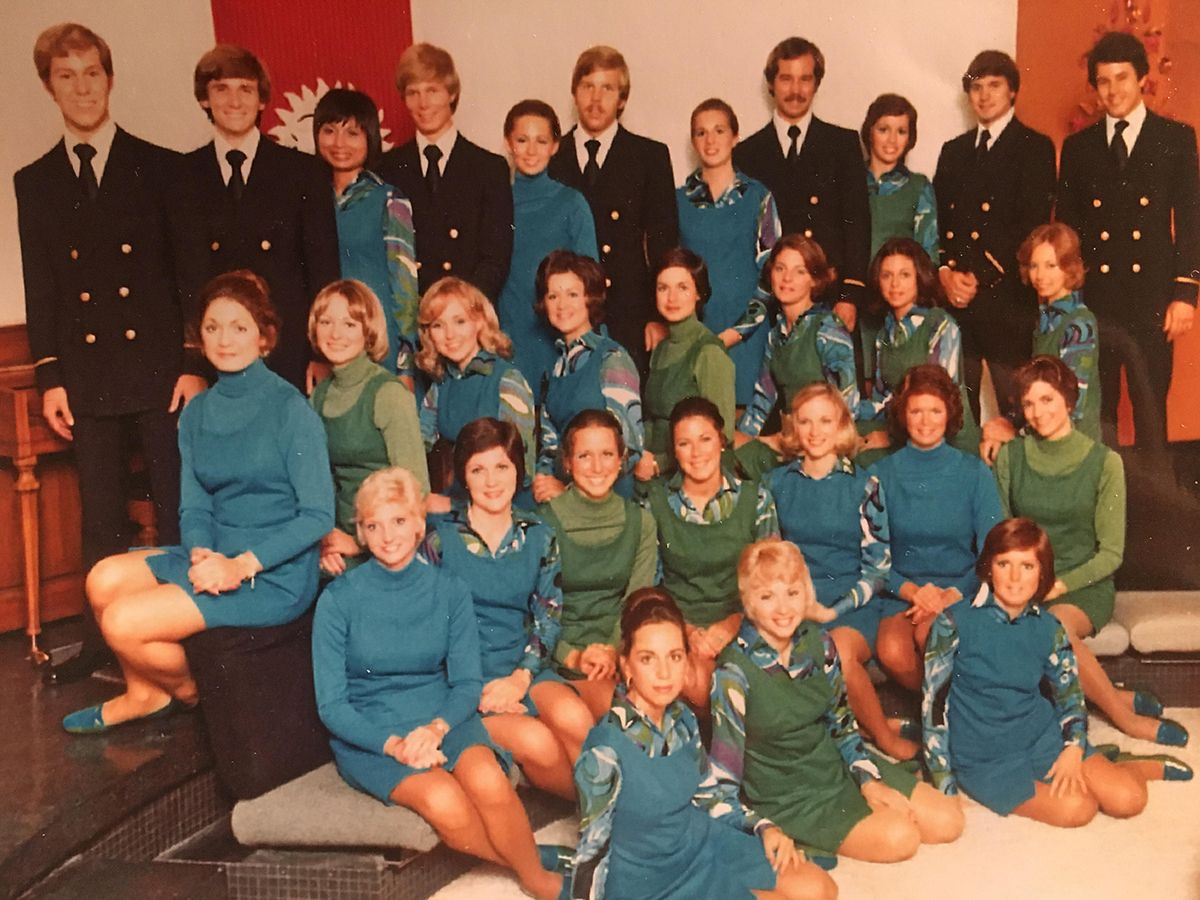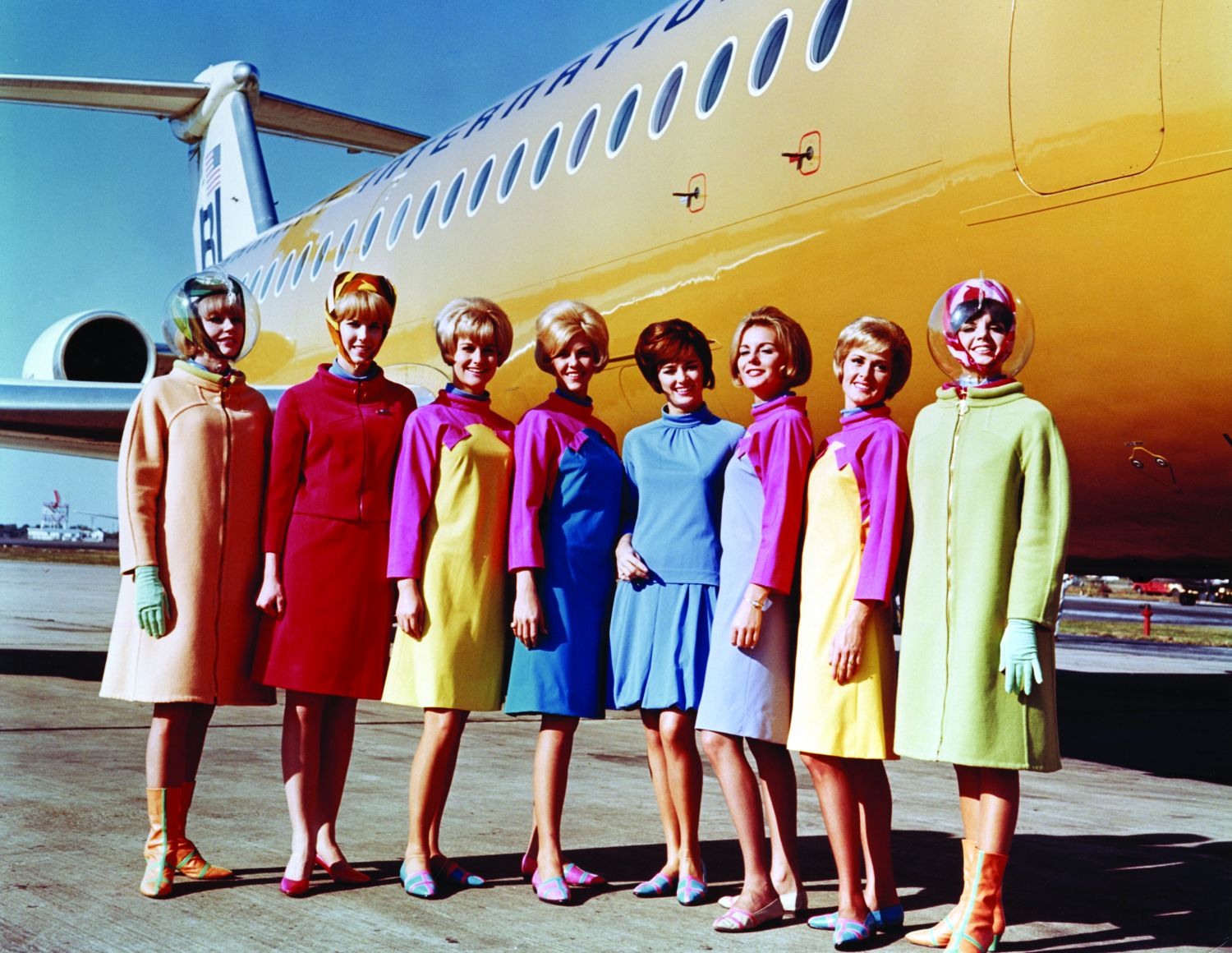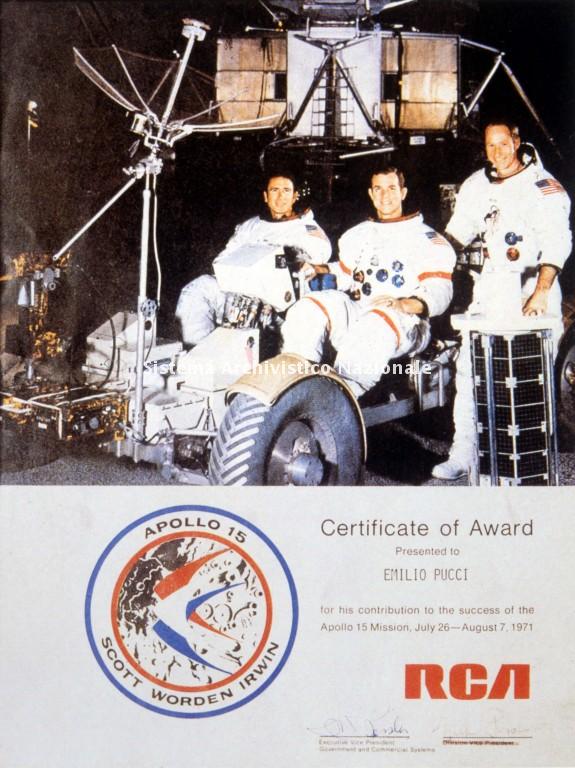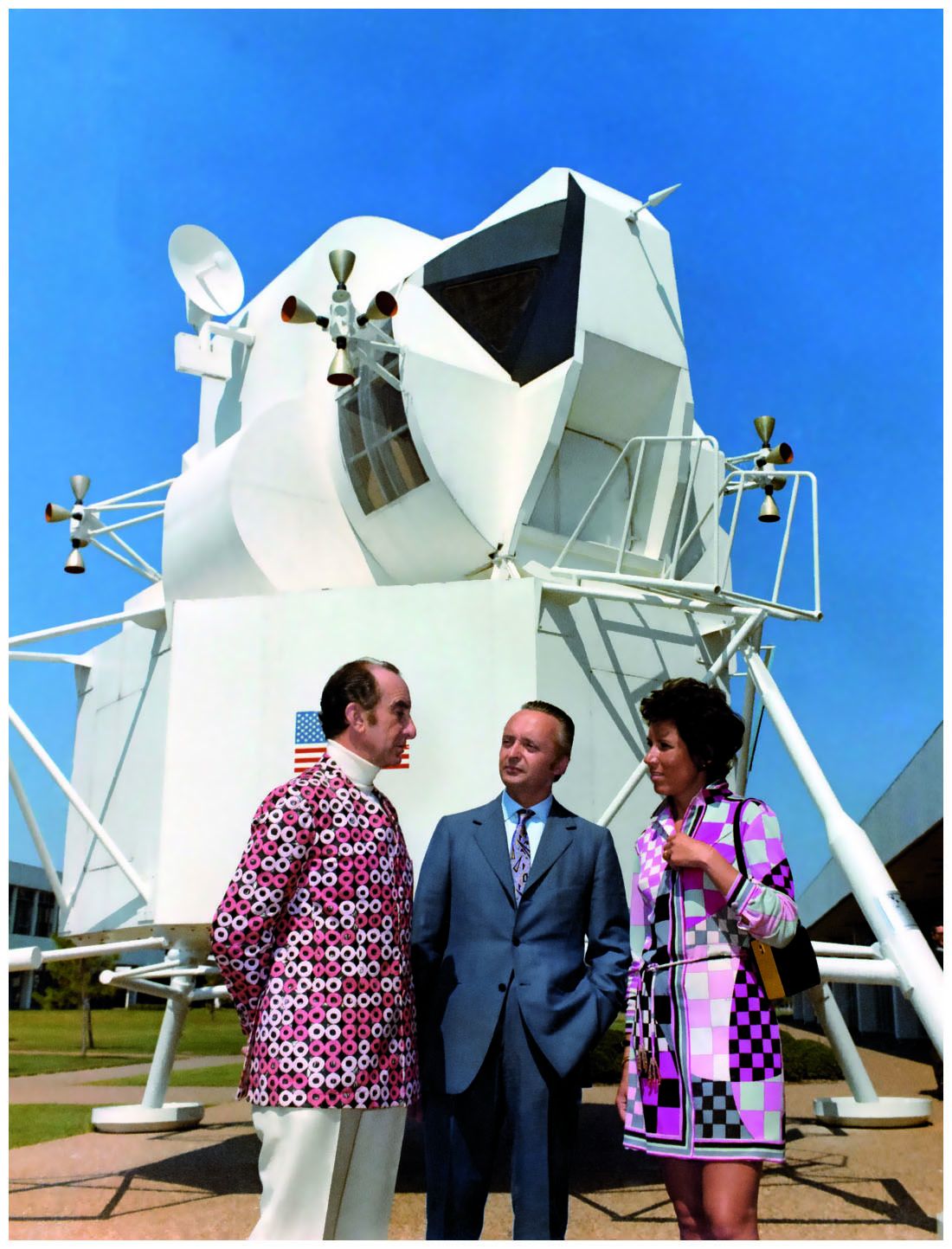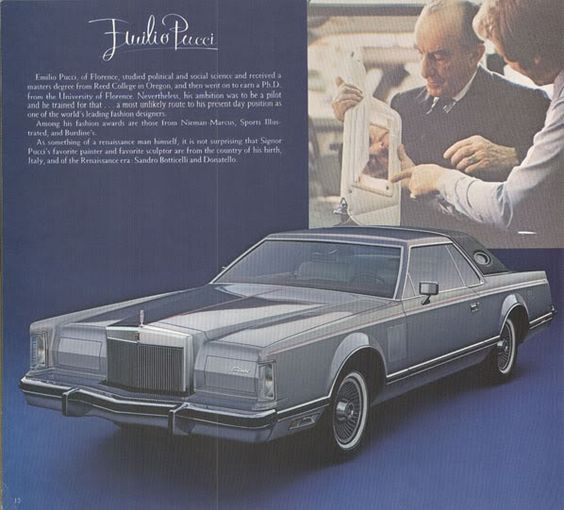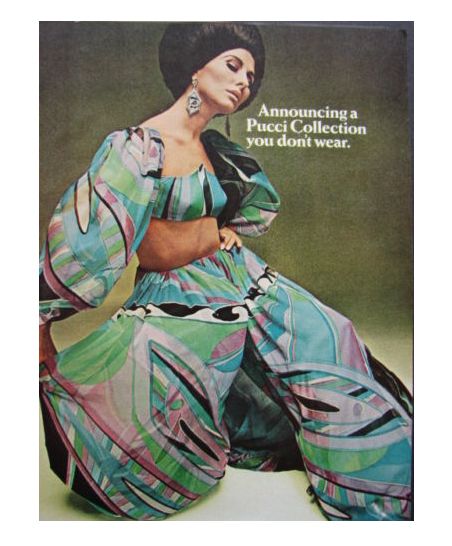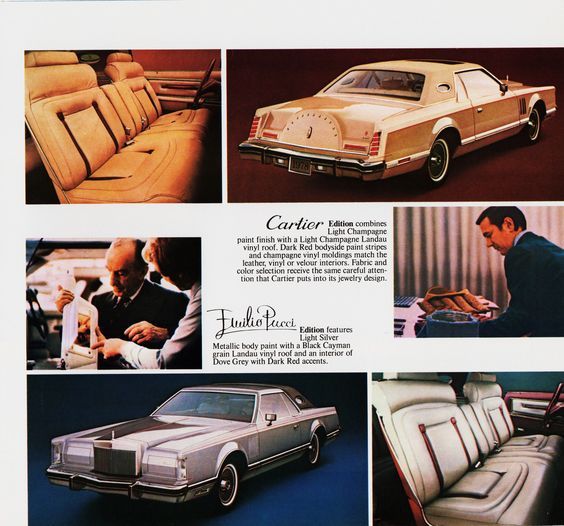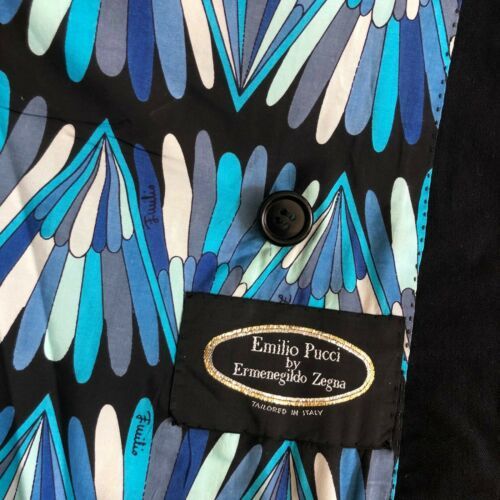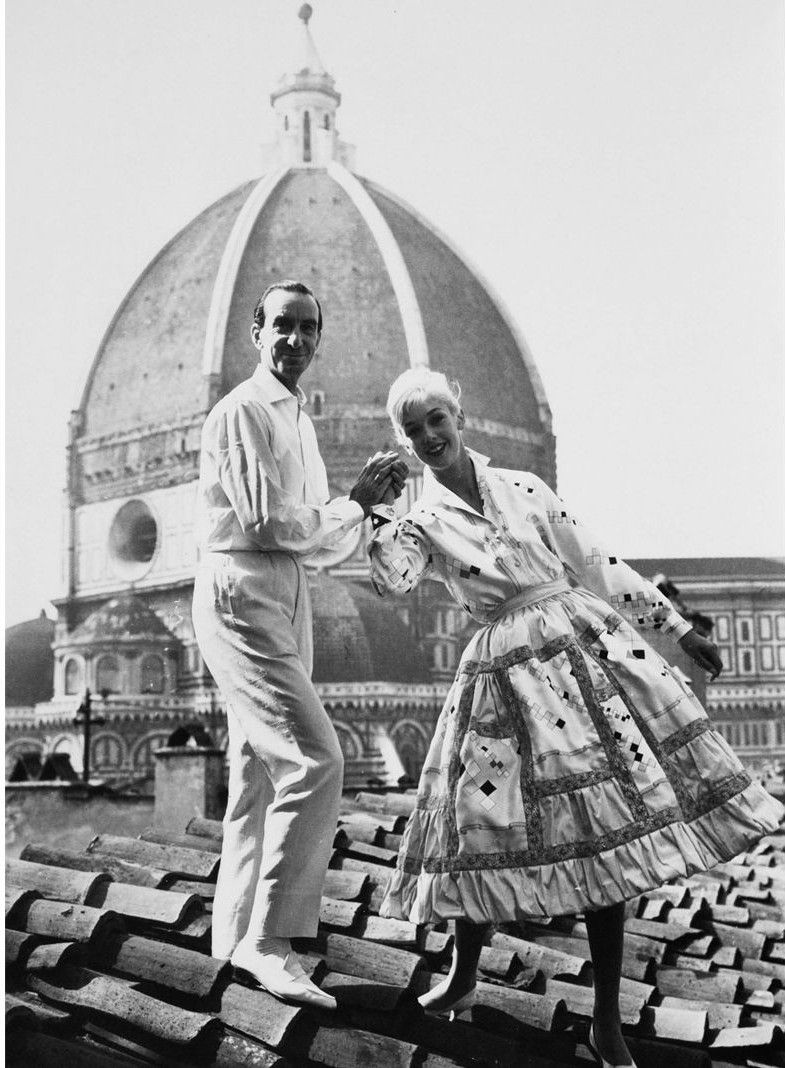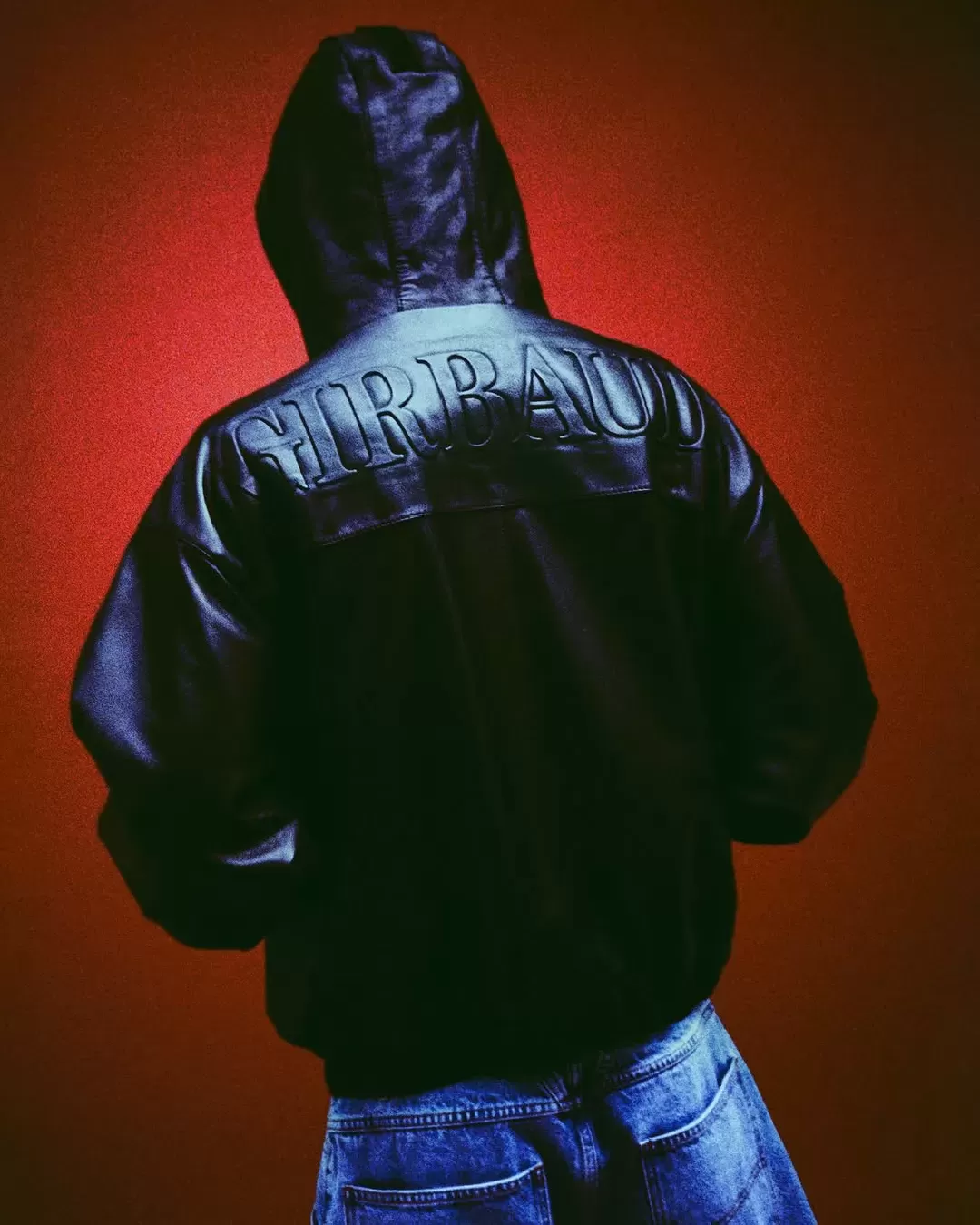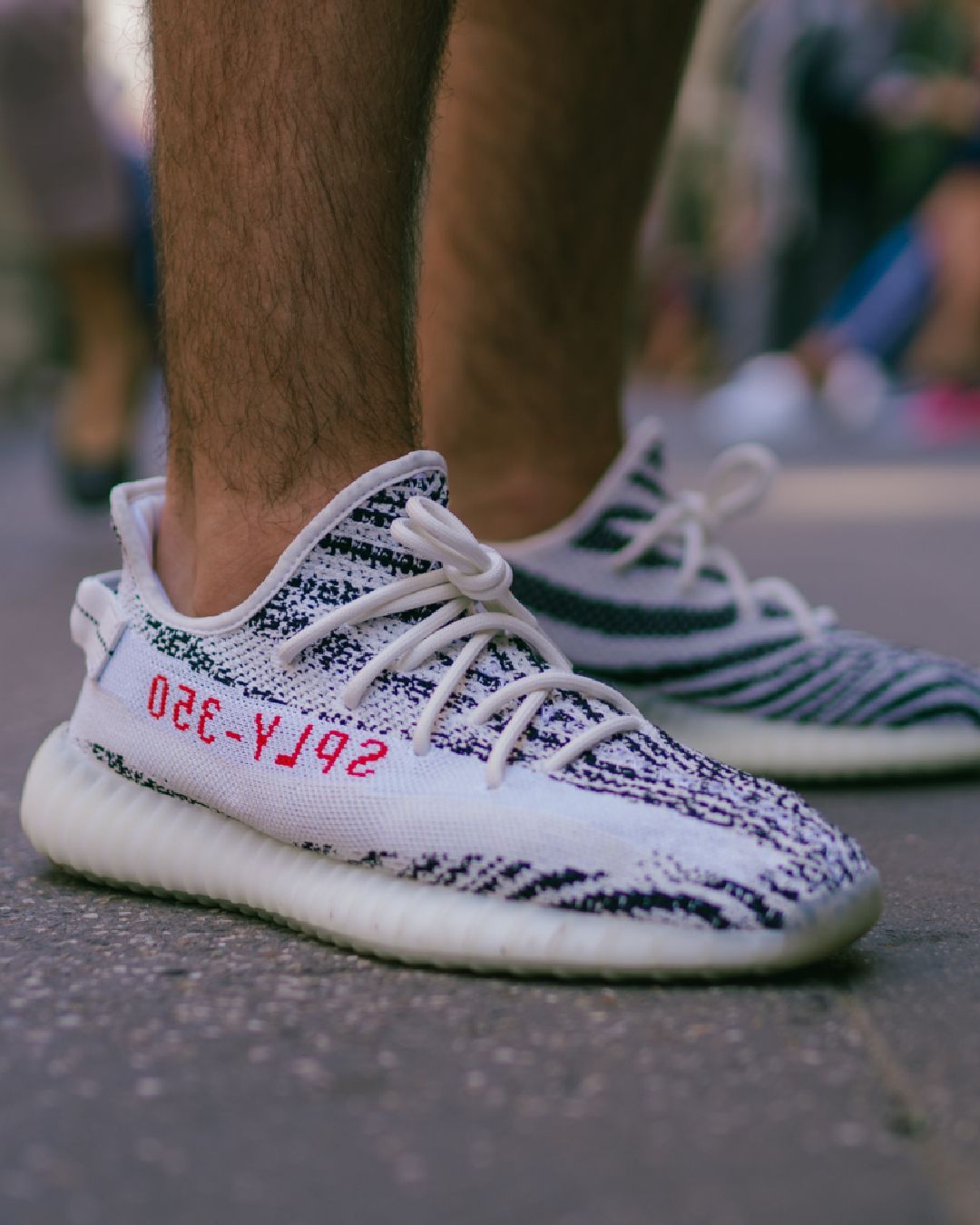
5 things to know about Emilio Pucci ahead of the collaboration with Supreme The Florentine designer became famous with the nickname "prince of prints" in the 1950s
Tomorrow the new collaboration between Supreme and Emilio Pucci will be released – a surprising but not at all nonsensical collaboration: the career of the designer called "the Marquis of fashion" or "the prince of prints" began with a ski suit, the first single-piece of its kind, that is, from a pure sportswear garment that ended up on the pages of Harper Bazaar's in 1948 – anticipating by a few decades the union of sportswear and fashion that in fact, Supreme would have brought to the perfection in the late 1990s and early 1900s. The collaboration with Supreme coming soon will bring together a new generation of consumers with some of the most iconic archive prints of the Italian heritage brand – and therefore provides the perfect opportunity to explore again the career highlights of one of the most important designers ever. But before he was a designer, Emilio Pucci was a man of enormous personality. His daughter Laudomia, who inherited the presidency of the company, summed up her character and career as follows:
My father was a minimalist before minimalism; a jet-setter before jets were flying; a scientist before fabric technology became a discipline; provocative in his modernity and sartorial daring. For him prints were rhythm and movement, and in prints he expressed a message of contagious happiness.
Without further ado, here are the 5 things to know about Emilio Pucci ahead of the drop of the collaboration with Supreme.
#1 Everything started with a ski suit
Emilio Pucci, Marquis of Barsento, was born in Naples on November 20, 1914, the eldest son of a noble Florentine house. An excellent skier, the young designer followed the Italian team to the Winter Olympics in Lake Placid in 1932 but did not participate in the competition. Shortly thereafter, he went to study at Reed College in Oregon, where he designed skiing for the university team. In 1937, at the end of his studies, Pucci enlisted in the army and fought as a pilot in the Military Aeronautica. After the war, Marquis Pucci dedicated himself to creating clothes and prints and his first creation was a ski suit, designed for a friend who, in the ski resort of Zermatt, was noticed by Toni Frissell, photographer of Harper Bazaars. Frissell was impressed that the suit was one-piece, and joined in a single parka silhouette and trousers, getting a much more elegant look. The shots published on the pages of Harper Bazaars in 1948 launched the designer's fame in the USA and were the first step in his international success.
#2 He was one of the forerunners of prêt-à-porter
The success came not in the mountains, but on the sea: Pucci opened a boutique in the residence La Canzone del Mare, in Capri, frequented by the most important stars of the time and members of the international jet-set such as Marilyn Monroe, Sophia Loren and Jackie Kennedy. Emilio Pucci used his knowledge of elastic fabrics to produce swimwear, created his first colourful and kaleidoscopic prints, and finally, at the suggestion of Neiman Marcus' Stanley Marcus, applied his prints to soft shirts and light silk dresses. At the time his production was revolutionary: the fashion of the time was still linked to the past – the 60s with their psychedelia had yet to arrive. It was real anticipation of that ready-to-wear that, in Paris, designers like Pierre Cardin and Gaby Aghion of Chloé were inventing independently. His prints came from the observation of nature: the blue of the sky and the sea, the green of the plants, the purple of the flowers. According to his daughter, he believed that "the colours of nature could never fit bad together" and this was the origin of his prints, which were also inspired by the colour contrasts of the Tuscan churches – today the collections inspired by the colours of the Palio di Siena and the mosaics in Sicily remain famous.
#3 He took part in the first Italian fashion show ever
In 1951, Giovanni Battista Giorgini organized the first collective fashion show of Italian designers to show and promote the country's fashion to buyers of international department stores who came to Europe for Paris Fashion Week. It was from that fashion show that Pitti Immagine would have originated, which would have evolved, after the migration from Florence to Milan, in the contemporary fashion week. Emilio Pucci invited buyers to see his collection in the ancient family palace, whose panoramic roof would in the future be the setting of numerous campaigns of the brand. His production came into the category of "fashion-boutique", distinct from the more classic Alta Sartoria/Couture and which would become in the future the ready-to-wear as we know it.
#4 He was one of the first Italian designers to experiment with collaborations
In addition to inventing and patenting his famous fabrics, Pucci was also one of the first designers to experiment with collaborations. In 1968, Pucci decided to start a menswear line and collaborated with the non plus ultra of Italian tailoring at the time: Ermenegildo Zegna. Today, such a collaboration between two such historic brands would be shocking – yet then it was the young executive style, which brought light and colourful fabrics into the men's wardrobe. Always following his own intuition, Pucci signed collaborations and licenses that brought his prints on all kinds of objects (it's no coincidence that the term "Puccimania" was born in the 60s and 70s) and especially with the lifestyle category: already in '61 he had ventured in the lifestyle category with a collaboration with the famous ceramic brand Rosenthal but also perfumes, pens, carpets and lingerie.
#5 He designed the NASA logo for the Apollo 15 mission
In 1965, Pucci was called upon to design the uniforms of Braniff International Airways. The new uniforms were a great success and the designer ended up creating six complete collections. His success, already enormous in America, increased, even more, when he was involved in the Apollo 15 mission: his design for the official symbol of the mission, which represented three swallows, won over the other 540 proposals. The original design was in full Pucci style, with a blue, purple and green colourway. The mission commanders, however, considered it unpatriotic and decided to change it to the colours of the Star and Stripes, i.e. blue, red, and white. On July 30, 1971, one of Emilio Pucci's designs arrived on the surface of the Moon.










































